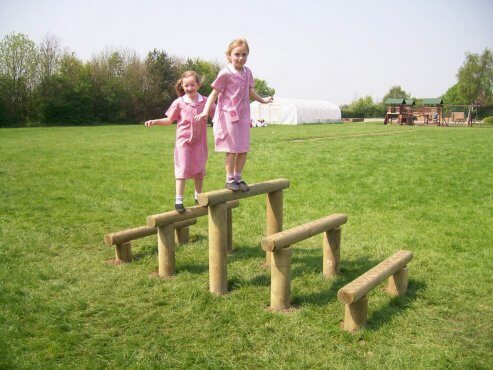
There is huge developmental potential to be gained from climbing. Back when we were little, a climbing frame was one of the first pieces of playground equipment that we would run to for the adrenaline rush when we reached the top and were King of the Castle!
Sadly nowadays, children have become much more used to a sedentary lifestyle. They love their phones and tablets, and even if they do love their sports and outdoor adventures, parents often keep them on a tight leash because they are afraid for their safety, too quick to shout “Get down from that tree!” than encourage them to go out and challenge themselves..
It’s time to give our kids back some of their freedom. It has often been argued that we are in danger of moving backwards as a species if we don’t allow and encourage our children to use their bodies in the way they were designed to use them.
Sue Palmer, a former head teacher and author of the book Toxic Childhood says:
‘’Children are biologically equipped for outdoor exercise and exploration. As we increasingly substitute this sort of activity with screen-based, consumer-driven entertainment, there’s a danger we’ll lose touch with many of the skills that have helped human beings survive through the millennia.’’
The good news is that many schools are getting wise to this notion. Outdoor play and outdoor learning is becoming more of a regular feature on lesson plans across the country.
Schools are designing and installing some fantastic outdoor learning spaces with good quality playground equipment, capitalising on and unleashing the developmental benefits that can be gained from allowing children to do what comes naturally to them, moving their bodies around as they learn and yes, letting them climb! Here’s why climbing is so beneficial to children:

1. Physical Fitness and Development
All that stretching, reaching and swinging, pulling and pushing with their limbs, is what teaches them awareness of their bodies and the space that they are in. It improves spatial awareness, and works children’s muscles so that they grow, strengthen and develop as they should.
It’s cardio-vascular fitness too; climbing across or up to the top of a structure takes some doing and requires energy. Balance and coordination is improved as children manoeuvre themselves across different surfaces and step or jump between levels.
2. Motor skills and control when they climb
These are the big steps that Early Years learners need to be able to master smaller movements which require fine control too. Think of the fine motor skills, the control required to fasten buttons on a shirt or to hold and manipulate a pencil.
If they are going to be able to do that successfully and learn how to dress themselves or how to form letters, then by mastering all the big arm movements they are in a much better position to master the smaller and more intricate ones.
This doesn’t just apply to EYFS children. Throughout the Key Stages children face all sorts of different challenges and keeping their bodies active and strong through climbing, and all the different parts of the body it uses, can’t fail to help them.
3. Learning Independence, risk taking and survival
Children need to learn how and when to, or when not to, take calculated risks for themselves. To be independent and survive. If they don’t learn how to do this when they are young, then they will struggle with all sorts of real-life problems later in life.
In climbing, children are continuously assessing risk so as not to fall and hurt themselves, or worse.
By offering children plentiful opportunities to climb in safe and supported environments, they learn how to assess and navigate risk and how to overcome it themselves. Most children have a natural sense of adventure and it’s about capturing this and allowing them to learn from it, rather than crushing it out of them.
4. Developing Logical thinking and Creative imaginations
Climbing frames, climbing walls, bouldering walls, climbing any which way, all present great mental challenges for children. They need to plan logically how to get where they want to be. It requires them to think about how best to move their bodies within the framework, and how to solve the puzzle of getting up or across to the destination point.
Not only does climbing stretch their bodies, but it stimulates their minds. Once children get into it, they can really start to use their imaginations too! A climbing wall or a climbing frame might be just that today, and a giant’s den, a princess’s castle, a spy’s base or a pirate’s cove tomorrow! Where will your children climb to next?
If you are looking to install some climbing apparatus in your school grounds and would like help with ideas, or would like to hear more about what we can offer, please contact us!
